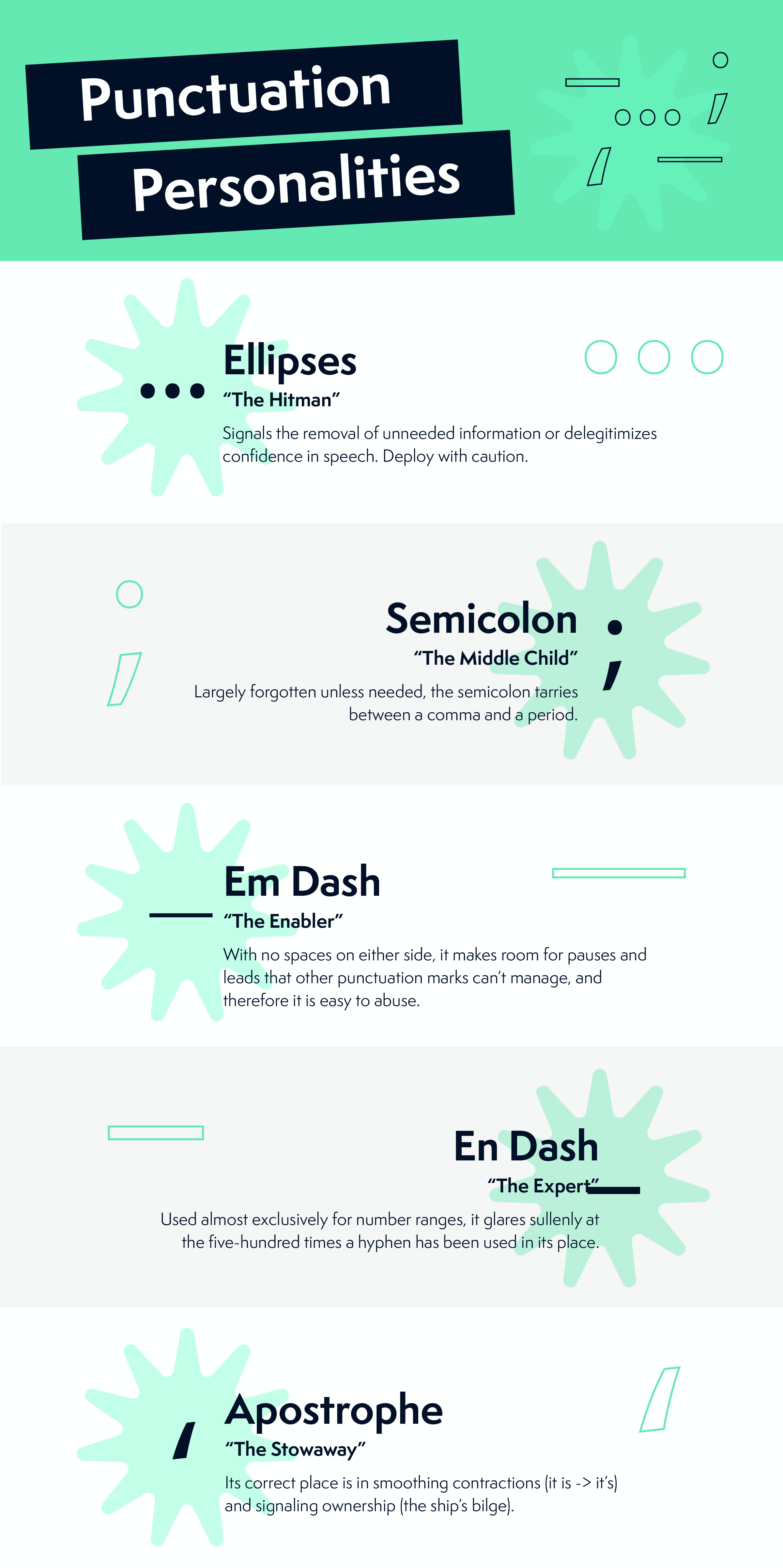When done correctly, punctuation is largely an invisible boon. When done incorrectly, punctuation can be a glaring pitfall. Errors are easy to make with such tiny marks, but it’s never too late to learn how to catch and wrangle them. Refamiliarize yourself with the purposes and personalities of some of the major punctuation marks, and never hesitate to check your own work.

Ellipses …
“The Hitman”
Earned its moniker either because it signals the removal of unneeded information or has single-handedly delegitimized the confidence of someone’s speech. Crucial in streamlining a quotation and detrimental in nearly any other fashion. Deploy with caution.
Semicolon ;
“The Middle Child”
Largely forgotten unless needed, the semicolon tarries between a comma and a period. If you are making a list and your listed items include commas, separate each element with a semicolon. If you’re a master grammarist, coax the semicolon out of its room to tie two related sentences together and replace a conjunction.
Examples:
“the cool, wide river; the sweet, succulent berries; and the broken birch”
“The door is locked in the evenings; if you find it open, please lock it.”
Em Dash —
“The Enabler”
The em dash is simultaneously your best friend and your worst friend—that is, so long as you use it correctly. With no spaces on either side, it makes room for pauses and leads that other punctuation marks can’t manage, and therefore it is easy to abuse. If you want a significant pause but don’t want to close the sentence, consider the em dash. If you want to sneak in information without making it sound like an aside (hi, parentheses), consider the em dash. Stop considering the em dash if you’ve used it so many times it starts to stick out.
En Dash –
“The Expert”
What is this half-pint em dash? It’s the en dash. Used almost exclusively for number ranges, it glares sullenly at the five-hundred times a hyphen has been used in its place. Other than number ranges, its most common job, it settles between words related to each other via conflict, connection, or direction as well.
Examples:
“pages 5–11”
“the north–south highway”
“the Dodgers–Brewers game”
Apostrophe ‘
“The Stowaway”
How did an apostrophe get here? It’s out of its mind!
The apostrophe is one of the most utilized punctuation marks in the English language, but it does not irregularly show up where it doesn’t belong. Its correct place is in smoothing contractions (it is -> it’s) and signaling ownership (the ship’s bilge). It is seldom used to signal a plural state, the only exceptions being for abbreviations, letters, or words that are used as nouns.
Examples:
“There were only two A’s on this exam.”
“Cross your t’s and dot your i’s.”






